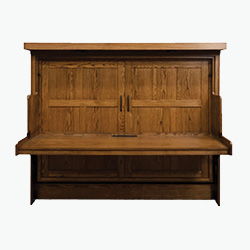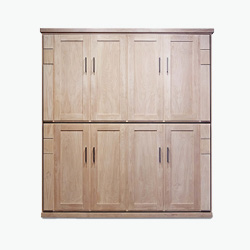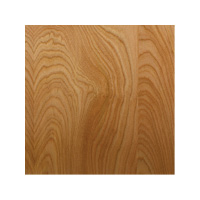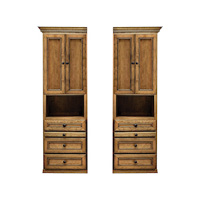The Fascinating Discoveries Of Beds In History
The Fascinating Discoveries Of Beds In History As modern day people, we probably take for granted the history of beds. We spend much of our time in these inventions! We sleep in them, we tuck our children into them every night, we watch TV while in bed, we study and check our social media in bed. We eat in beds, we make love in beds, we spend money to sleep in motel beds, we spend money to make our own beds prettier and more comfortable. But how did civilization begin with the concept of a bed? How did this business of bed begin? Most people don’t know, or have never even contemplated the beginning of beds. It’s actually a long and interesting history, being in a bed. So snuggle in and read on!
Back to The Beginning Of History In Bed
 What we know of the earliest found beds comes from research findings in the 1970’s dealing with people from the Neolithic age (7000 B.C. to 6000 B.C.) “Much of what we know about this period comes from primitive human drawings found on cave walls or from archaeological digs. In the mid-1970’s, a research team from Texas A&M led by professors Harry J. Shafer and Vaughn M. Bryant carefully excavated Hinds Cave located in the Lower Pecos Canyonlands in southwestern Texas. There they discovered a treasure trove of artifacts dating back over 9,000 years left there by the nomadic hunter-gatherers that moved through the area. The discovery was that of grass-lined beds that the site’s occupants once curled up into sleep. Pits were created in the soft sediment and this grass was lined into the pits offering some comfort to its occupant. The size of many of these pits suggested that the occupant would sleep in the fetal position.”
What we know of the earliest found beds comes from research findings in the 1970’s dealing with people from the Neolithic age (7000 B.C. to 6000 B.C.) “Much of what we know about this period comes from primitive human drawings found on cave walls or from archaeological digs. In the mid-1970’s, a research team from Texas A&M led by professors Harry J. Shafer and Vaughn M. Bryant carefully excavated Hinds Cave located in the Lower Pecos Canyonlands in southwestern Texas. There they discovered a treasure trove of artifacts dating back over 9,000 years left there by the nomadic hunter-gatherers that moved through the area. The discovery was that of grass-lined beds that the site’s occupants once curled up into sleep. Pits were created in the soft sediment and this grass was lined into the pits offering some comfort to its occupant. The size of many of these pits suggested that the occupant would sleep in the fetal position.”
So our early ancestors in Texas were digging shallow holes and filling them with soft organic matter to snuggle their children into. This must have felt safe and comforting to these people, though it seems laughable primitive to us, but we had to start somewhere! Not having tools or the means to construct a bed like object, a hole would have been the best they could do. Someone should dig a hole in their backyard and line it with grass clipping and post it on AirBNB and see if there are any takers, “rustic overnight lodging” you could call it! Hundreds of years later, our Late Neolithic (5000 B.C.- 4000B.C.) ancestors had made some vast improvements on the hole-bed, “Several unearthed sites by archaeologists from this period give us a much better understanding of beds, bedroom furniture and life in the Late Neolithic Age. One of the most well preserved of these sites is located in Orkney Scotland, UK, An island located at the northernmost part of Scotland. The settlement known as Skara Brae was protected by dunes until its discovery. In 1850 heavy storms washed away part of the dunes to reveal the best preserved prehistoric village in Northern Europe. The people of this period primarily used stone in their furnishings… (there is) a stone dresser which would have held tools or other important possessions. Surrounding this dresser to the left and right are ancient beds. These were huge slabs of stone that would most likely have been topped with bracken (a large fern) and covered with animal skins for warmth and comfort. Perhaps these could be considered early platform beds due in part to their box shape.” A whole bedroom suite now! Maybe not so comfortable, but at least off the ground away from critters and moisture, anyway. Soon, however, there were to be some major advancements for the history in beds. The Romans and the Egyptians were going to take the concept of the bed to new and exciting heights!
Style Comes To Our Beds In History
The ancient Egyptians are known for all kinds of fantastic things, the pyramids, statues, obelisks, a written language, iconic decorative surfaces, and on and on. They also cared about where and how they slept. No more stone slabs! Egyptians used carved wood to create a more comfortable and movable bed, “The most ornate of these wooden beds were created with elaborate gold sheaths covering the outside of the bed.[5] Woven mats were placed on the wood framework creating a platform for the mattress and beneath this animal shaped legs accented the lower half of these beds. Mattresses were constructed of wooden slats with plaited (a type of stitch) strings or reeds which would hold wool cushions or other types of soft material. Egyptian used sheets made of linen.” 
Notice we have moved on from leaves and grass and such to actual woven material as soft as linen. Linen bedding really hasn’t been improved on much since then, it’s still a premier fabric for sheets. Also, beds were not just seen as a practical item, they were decorated with gold and intricate carvings… Egyptians must have recognized how wonderful it is to curl up in a favorite spot.
The Romans, known for their extravagance, of course made the bed an art form. Romans made metal beds and used metal crossbars on the top surface so mattresses could be laid right on the bed instead of being reeds woven into it. The mattresses themselves were filled with feathers or straw, all the more comfortable! These beds were often made for two people, pillows were at the foot and head of the beds, blankets were made of wool (must have been colder than in Egypt…) and often these beds had rich embroidered panels of fabric hanging around them for privacy and decoration. Romans didn’t just sleep in their beds, oh no, they had a bed for almost everything! Some of their beds were:
- Chamber beds for regular sleeping
- Marriage beds for spending time with a spouse
- Table beds, because Romans ate in repose (how awesome is that?)
- Beds for studying and reading
- Beds for the dead, which were thrown on a funeral pyre
So we can thank the Egyptians and Romans for their fabulous contributions to the history of beds. But here is where beds really evolve, with our next big step in time to Europe for Medieval and Renaissance improvements on the bed!
From Dirt Floors To Velvet Cushions And Curtains
The time in Europe known as the Medieval period was not so great for beds in history. Europeans at the beginning of this time had yet to discover the joy of beds, “The ancient Germans lay on the floor on beds of leaves covered with skins, or in a kind of shallow chest filled with leaves and moss. In the early Middle Ages they laid carpets on the floor or on a bench against the wall, placed upon them mattresses stuffed with feathers, wool, or hair, and used skins as a covering. Curtains were hung from the ceiling or from an iron arm projecting from the wall. They appear to have generally lain naked in bed, wrapping themselves in large linen sheets which were stretched over the cushions.”
The Scandinavians had it only slightly better, “In Scandinavia during this period, Norwegian Vikings were building wood slatted platform style beds for use in their ships. These wood beds were more basic in design from much of the rest of the world but show us a people who began integrating slat construction into their design. This construction allowed the Norwegian Vikings great flexibility in getting them into their ships for the voyages ahead.”
 But things got better for the Europeans around the 14th century, “In the 14th century the woodwork became of less importance, generally being entirely covered by hangings of rich materials. Silk, velvet and even cloth of gold were frequently used. Inventories from the beginning of the 14th century give details of these hangings lined with fur and richly embroidered. It was then that the Four poster bed (also known as a tester bed) made its first appearance, the bed being slung from the ceiling or fastened to the walls, a form which developed later into a room within a room, shut in by double curtains, sometimes even to exclude all drafts. The space between bed and wall was called the ruelle, and very intimate friends were received there. The 14th century is also the time when feather beds became highly prized possessions.”
But things got better for the Europeans around the 14th century, “In the 14th century the woodwork became of less importance, generally being entirely covered by hangings of rich materials. Silk, velvet and even cloth of gold were frequently used. Inventories from the beginning of the 14th century give details of these hangings lined with fur and richly embroidered. It was then that the Four poster bed (also known as a tester bed) made its first appearance, the bed being slung from the ceiling or fastened to the walls, a form which developed later into a room within a room, shut in by double curtains, sometimes even to exclude all drafts. The space between bed and wall was called the ruelle, and very intimate friends were received there. The 14th century is also the time when feather beds became highly prized possessions.”
So the Europeans began to come around to the possibilities for luxury in the history of beds and then really ran with this concept during the Renaissance period.
The 17th century, for beds, was a time in history of opulence and general showing off. People not only slept in beds, but entertained from bed and even governed from them. The canopy bed really came into prominence during this time as rich fabrics could be hung all around and closed, for more entertaining of the private sort, perhaps? In any case, things got interesting, “In the 17th century, which has been called ‘the century of magnificent beds’, the style a la duchesse, with tester and curtains only at the head, replaced the more enclosed beds in France, though they lasted much longer in England. Louis XIV had an enormous number of sumptuous beds, as many as 413 being described in the inventories of his palaces. Some of them had embroideries enriched with pearls, and figures on a silver or golden ground. The great bed at Versailles had crimson velvet curtains on which ‘The Triumph of Venus’ was embroidered. So much gold was used that the velvet scarcely showed. In the 18th century feather pillows were first used as coverings in Germany, which in the fashions of the bed and the curious etiquette connected with the bedchamber followed France for the most part. The beds were a la duchesse, but in France itself there was great variety both of name and shape. The custom of the ‘bed of justice’ upon which the king of France reclined when he was present in parliament the princes being seated, the great officials standing, and the lesser officials kneeling, was held to denote the royal power even more than the throne.”
This was probably the fanciest time for beds, as later in history, beds became more sober.
The Last Few Centuries
Beds remained pretty ornate through the colonial periods in Europe, but new powers in the world were coming into play and by the time of the Industrial Revolution things had changed. Many things, including furniture was being mass produced and more people were buying them for more practical purposes, “Traditional ornate and hand carved bed designs were gone. They were replaced by simple flowing lines. Styles became less ornamental like in centuries past and were now more elegant in appearance. Mahogany and Satinwood became the dominant species of wood used during this period. Mass production of parts made bed manufacturing simple and cheap and eventually led to manufacturers putting out revival or reproduction beds grafted with historically correct ornaments. (Renaissance, Greek, Egyptian, Ect.) Individual craftsmen and designers were unable to compete with these imitated styles being cheaply made and put into the market to these newly wealthy but uninformed furniture buyers and often found themselves eventually working with these manufacturers out of a need to stay employed.”
Beds were commercial now. For everyone. Which is good for all of us. Beds are a part of our life, something like a third of it. We all use them.
A Bed For Everyone
These days, there is no one popular all pervasive style of bed. There is a bed for everyone. There are all kinds of beds for infants (cradles, bassinets, cribs…), beds for children (youth beds, bunk beds…) water beds, the ever popular Murphy bed (our favorite!), day beds, single beds, double beds, queen size beds, king size beds, California king size beds, vibrating beds, platform beds… it’s almost overwhelming! There are famous beds in history that we all know about… dignitaries paying to sleep in Lincoln’s bed in the White House, The Great Bed of Ware immortalized by Shakespeare and Lord Byron, Elvis’s “hamburger bed”, a circular bed upholstered in brown fabric with a stereo in the headboard. We are fascinated by where famous people slept. We are comforted by where we ourselves sleep. We are concerned about where our children sleep. The history of beds is a history of us, of the importance we place on comfort and sleep. What is your own history of the bed? Where has been your favorite place to sleep in your life? At Wilding Wallbeds we know how important a bed can be, it’s our passion. If you are looking for a new style of bed to fit your life, we’d be delighted to be a part of your history of beds!
Image Credits: Tutankhamun’s Gilded Bed: By Hans Ollermann – Flicker, CC BY 2.0, Link
Southampton Medieval Murchant’s Bed: By Hchc2009 – Own work, CC BY-SA 3.0, Link
Napoleon I’s Bed: By Photo: Andreas Praefcke – Own work (own photograph), Public Domain, Link












